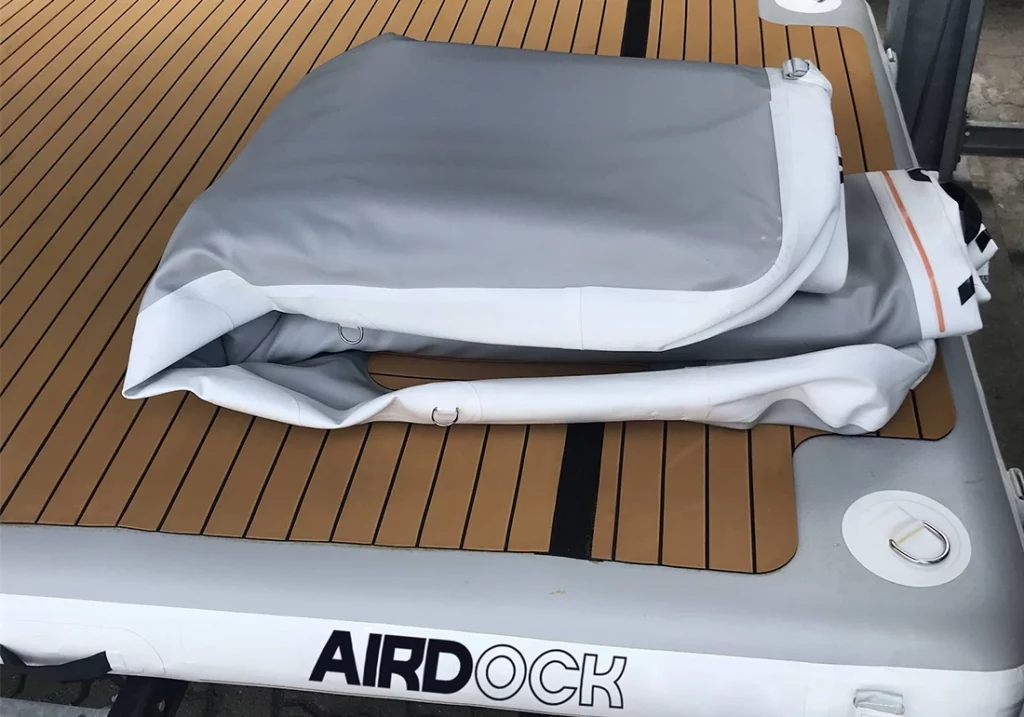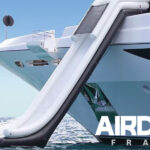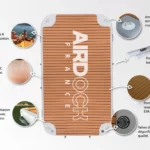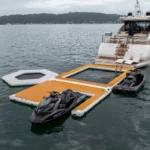
Inflatable yacht pontoons, made from Drop Stitch Fabric (DWF), are a practical, hard-wearing innovation that makes life easier for yachtsmen. However, like all nautical equipment, their longevity depends directly on how well they are maintained. In this article, we focus on best practices for maintaining and maximizing the durability of this equipment, to ensure its long-term effectiveness and sturdiness.
Why is maintenance essential for inflatable pontoons?
Inflatable pontoons are designed to withstand the rigors of the marine environment: UV rays, salt water and friction. However, without regular maintenance, even the toughest materials can wear out prematurely.
Effective maintenance has several advantages:
- Extend the life of your pontoon, avoiding damage caused by wear and tear or extreme conditions.
- Maintain appearance and performance, keeping the surface clean and the material in good condition.
- Reduce repair or replacement costs, by identifying small problems before they become major ones.
Key steps for maintaining an inflatable yacht pontoon
1. Cleaning after each use
Salt water, algae residues and marine debris can accumulate on the pontoon surface. Here are the steps to effective cleaning:
- Fresh water rinse: Use a fresh water hose to remove salt and impurities. This simple step prevents the formation of crystallized salt deposits, which can damage the material in the long term.
- Mild soap: Apply a soap specially formulated for marine equipment. Avoid aggressive detergents, which may weaken the DWF or alter the welds.
- Non-abrasive brush or sponge: Use a soft sponge to gently scrub dirty areas. A hard brush can scratch the surface and reduce its durability.
Tip: If your pontoon is stained by oil or chemicals, use a suitable marine cleaner, but test it on a small area first to avoid discoloration.
2. UV protection
Prolonged exposure to the sun can damage the surface of inflatable pontoons, even if they are made from resistant materials.
- Use UV protection: Apply a UV protection spray after cleaning. This product creates a barrier against harmful rays and prolongs the color and texture of the material.
- Store in the shade: When the pontoon is not in use, store it in a shaded area or cover it with a protective cover.
3. Regular inspection of valves and welds
Valves and welds are critical to maintaining the pontoon’s watertightness and performance. Frequent checks can detect problems before they affect use.
- Valve inspection: Check that valves are not leaking and that they close properly. If a leak is detected, it may be sufficient to retighten the valve or replace the seal.
- Examination of seams: Look for signs of separation or weakness at the seams. A quick repair with a suitable kit can prevent more serious damage.
4. Repairing leaks or perforations
Even though DWF material is highly resistant, accidents can happen (impacts with sharp objects, abrasions on rocks, etc.). In the event of a leak, here’s what to do:
- Locate the leak: Inflate the pontoon and apply soapy water to its surface. Bubbles will appear where the leak is.
- Clean the area: Make sure the surface around the leak is clean and dry.
- Patch: Use the repair kit supplied with the pontoon, which contains DWF patches and special glue. Allow to dry according to the manufacturer’s instructions before reinflating.
Important: If the leak is large or located in a critical area (valves, main welds), it’s best to call in a professional.
5. Proper inflation and deflation
Incorrect inflation can affect pontoon performance and longevity. Here are the best practices:
- Observe recommended pressure: Consult the manufacturer’s instructions for the ideal pressure (often between 8 and 15 psi for DWF pontoons). Under-inflation reduces rigidity, while over-inflation can damage the material.
- Avoid temperature variations: If you use your pontoon in a very hot environment, keep an eye on the pressure, as the air inside may expand. Deflate slightly if necessary.
- Fold carefully after deflation: When storing the pontoon, fold it carefully without forcing seams or welds.
6. Off-season storage
When you’re not using your pontoon for a long time, proper storage is essential:
- Clean and dry thoroughly: A damp pontoon may develop mould or unpleasant odours during storage.
- Store in a bag or cover: Use the supplied carry bag or protective cover to avoid dust and scratches.
- Store in a cool, dry place: A room with a stable temperature, protected from humidity and rodents, is ideal.
Extending durability: investing in the right accessories and products
Protective covers
A custom-made cover protects your pontoon from UV rays, dust and friction during transport and storage.
Repair kits
Always carry a repair kit on board, including patches, glue and tools for quick repairs.
Quality pumps
Investing in a high-pressure pump with pressure gauge allows you to inflate your pontoon to the exact pressure, guaranteeing optimum performance.
Common mistakes to avoid
- Leave the pontoon exposed to the sun for long periods without protection.
- Use abrasive products or hard brushes that damage the material.
- Transporting or storing wet pontoon boats encourages mildew.
- Ignore minor damage, which can quickly worsen.
- Overload the pontoon by exceeding the maximum capacity indicated.
Conclusion: maintenance as a guarantee of longevity
Inflatable yacht pontoons made from DWF are designed to be robust, but they require regular maintenance to deliver optimum performance over the long term. By following the best practices described in this article, you’ll be able to enjoy your pontoon to the full while avoiding the costs associated with repairs or premature replacement.
Investing time in maintenance is a wise choice that will guarantee years of trouble-free use, whether you’re relaxing at sea or taking part in nautical activities.



